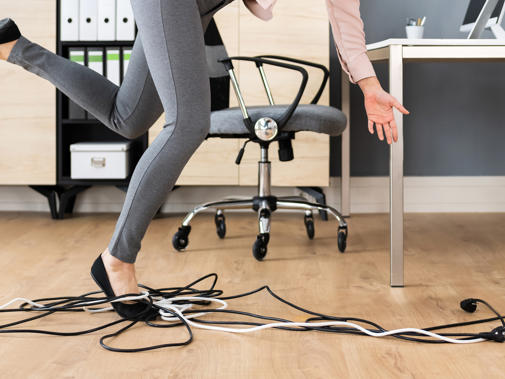There are many ways in which doctors are at risk from injury at work. We hear much about needlestick injuries, and the deeply worrying trend of assaults on staff. But sometimes it’s more to do with an employer’s carelessness – which in this case was aggravated by its reluctance to do the right thing once the injury had been caused.
It was a scene which would be familiar to many working in hospitals. Outside the doctor’s office, it was a mess. There was simply not enough space for the items haphazardly arranged there – the chairs, in what had become an impromptu waiting area, and the boxes of toys for younger patients. The floor was uneven.
It was an accident waiting to happen, and happen it did, when the member fell badly and fractured her knee. She needed surgery, and it was months before she was sufficiently mobile to return to work. In total, she was absent for nine months. She still needs to use a walking stick and it is likely her disability will be permanent.
What the member needed was an honest, compassionate response. What she got was an unnecessary and stressful battle to make up for the financial loss she had suffered.
The initial report from the trust said it was the doctor’s choice of footwear which caused the accident. This was not true. A manager inspected the area, but only after it had been (conveniently) cleared up. The trust would not provide the DATIX incident report to the BMA, and said the CCTV footage had been automatically destroyed prior
to the BMA getting involved in the case.
Meanwhile, the financial burden on the doctor grew worse. She was only in her first year of employment, and so only due one month’s full sick pay and two months’ half-pay. She was paying for private physio sessions. But her employer was refusing to pay NHS injury allowance – a no-fault scheme for which it would not have even had to accept liability for the accident. The allowance pays up to 85 per cent of salary.
The doctor took this to a grievance, which was not upheld, but the process was carried out incorrectly, without a hearing where she had the chance for a right to reply and to ask questions. With the BMA’s help, she appealed, the employment adviser supporting her through the online hearing.
Finally, the trust relented, paying not just the 85 per cent of pay that was due under the injury allowance but her full salary, albeit still without admitting liability.
The likely permanent nature of the member’s disability means she is now reluctantly considering a personal injury claim.
The doctor said she would not have had this outcome without the BMA, and prior to it getting involved, the trust was not even responding to the doctor. When the employment adviser pointed out the procedural errors with the grievance, it took months to get a reply, and achieved after he escalated it to a senior manager. Agreement for the payment only came 10 months after the accident and it took further chasing and two further months to get the money.
It’s a fine example of the persistence and expertise of the BMA employment advisers who work to help members in situations such as this.
On the ground is a regular article highlighting practical help given to BMA members in difficulty

